Starting this month, the Rewilding Portugal team are coordinating cross-border, multi-partner efforts to enhance the recovery of Iberian lynx and Iberian wolf populations south of the Douro River.
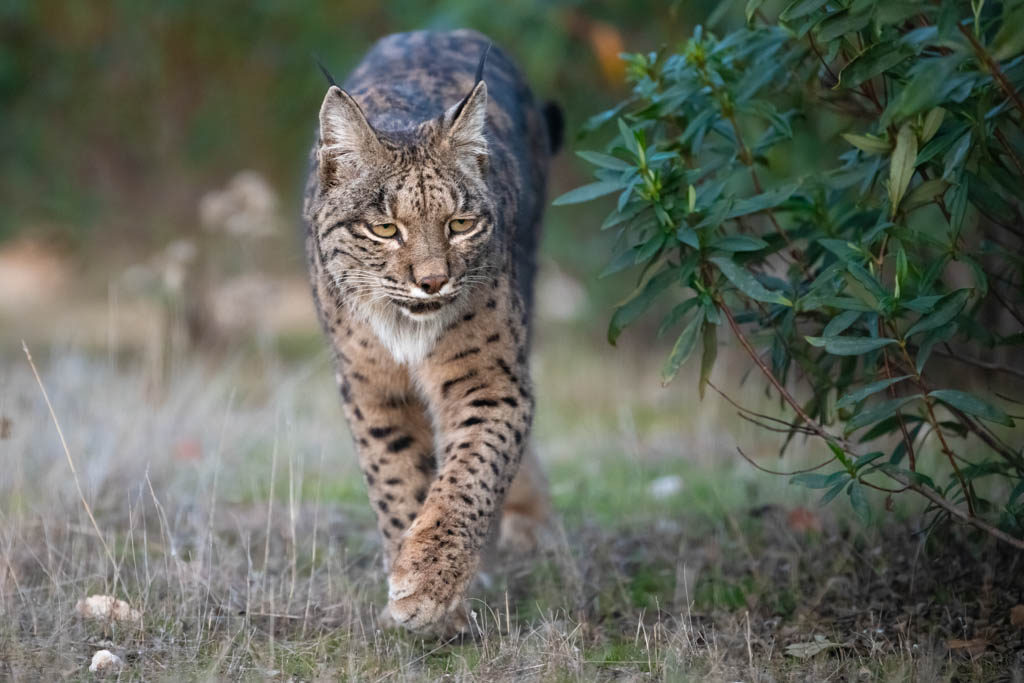
Essential predators 
Supporting wildlife comeback is a core element of our work at Rewilding Europe, because healthy and diverse populations of animal species are a critical element of functional ecosystems. We do this by creating the conditions for wildlife to return of its own accord, and by reintroducing animals into habitats where they are missing and cannot return on their own. This is particularly important for keystone species, which play an essential role maintaining ecosystem balance.
In Spain and Portugal, the Iberian lynx and Iberian wolf are both keystone predators whose populations are unnaturally low as a result of various human factors. Although both species are now making a tentative comeback in parts of the Iberian Peninsula, sustaining their recovery will depend on continuing and stepping up efforts to promote coexistence with people, and also to improve habitat conditions, which includes measures to enhance the availability of natural prey in the landscape. The Rewilding Portugal team have already been working to support the Iberian wolf population south of the Douro River by doing just this.
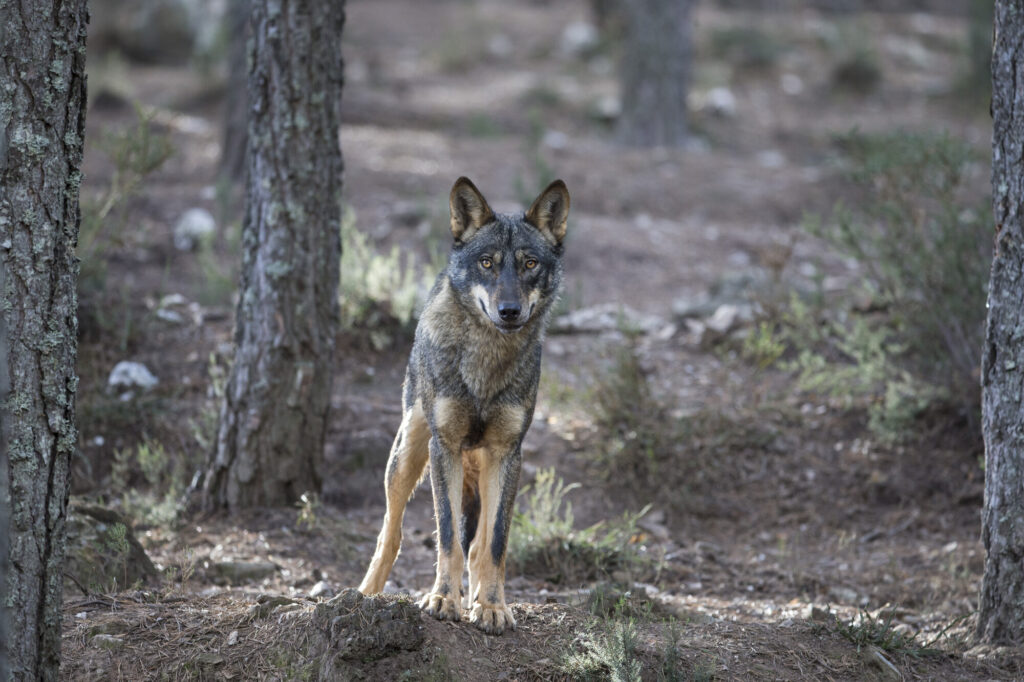
Enabling comeback
Building on the work of the Rewilding Portugal team to date, scaled up efforts to support the comeback of Iberian wolf and Iberian lynx populations south of the Douro River are kicking off this month, with support from the EU LIFE Programme. Coordinated by Rewilding Portugal, the new LIFE LUPI LYNX initiative will see five Portuguese and two Spanish organisations collaborate to create socio-ecological conditions that will enable both species to recolonise the landscape, in areas where both species are beginning to appear or still have an irregular presence.
Focusing on the Beira Interior region of Portugal, as well as the province of Cáceres in Spain’s Extremadura region, the cross-border scope of these efforts will enhance their beneficial impact across an extensive landscape.
“We are essentially working along two corridors which can enable both species to disperse in the landscape and establish settled populations,” explains Sara Aliácar, Rewilding Portugal’s rewilding manager. “A north-south corridor that runs along the border, and an east-west corridor that corresponds with the mountain ranges of the Sistema Central, which includes the Serra da Estrela and Sierra de Gredos.”
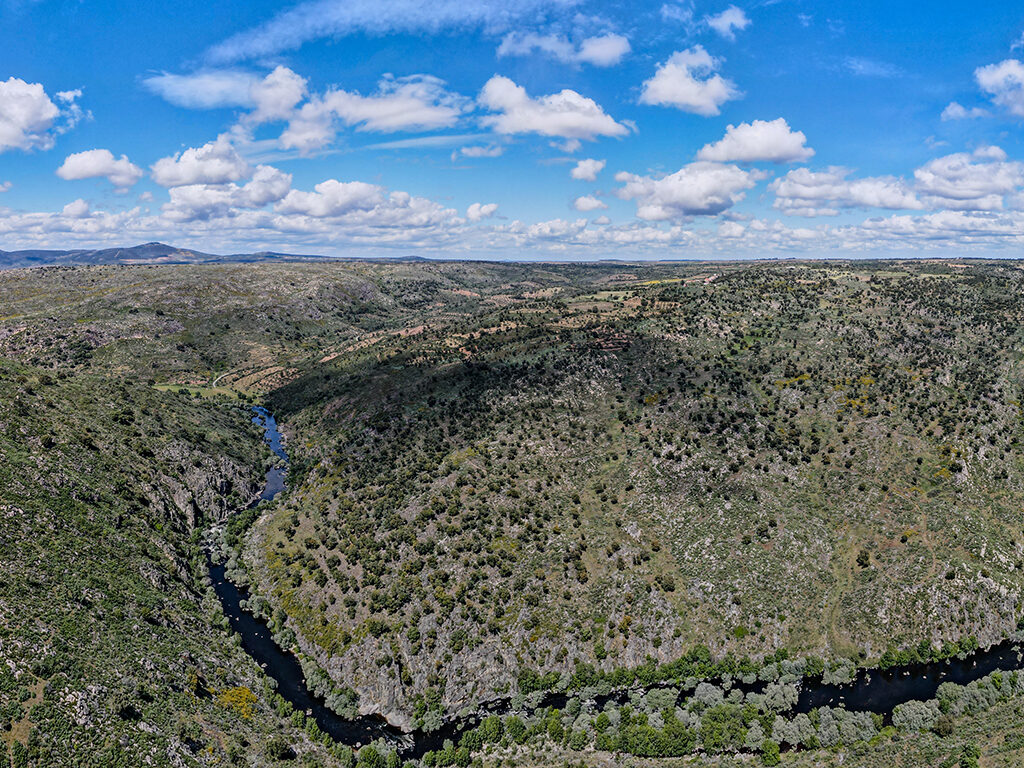
Wide-ranging measures
The efforts and objectives of the seven partners will be wide-ranging and multidisciplinary, including measures to increase the availability of prey for both wolves and lynx. Iberian lynx prey primarily on the European rabbit, which is endemic to the Iberian Peninsula, with a diet supplemented by red-legged partridge, rodents, and wild ungulates such as roe deer and fallow deer. While European rabbits were once extremely abundant in both Portugal and Spain, myxomatosis virus, viral haemorrhagic disease, and habitat loss have led to a widespread decline over the last century. Roe deer and wild boar are the most important natural prey species for Iberian wolves.
“With regard to lynx, we need to increase the abundance of rabbits in the landscape,” explains Sara Aliácar. “This will be done through population reinforcement, measures to restore habitat, and by working with hunters and private landowners. In terms of enhancing roe deer populations, we will also work with hunters to reduce hunting pressure and restore habitat so that it can support greater numbers of roe deer.”
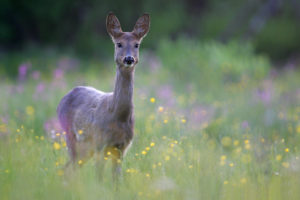

Other measures will focus on improving the legal framework for the use of livestock protection dogs. On a practical level, the aim is to increase the use of measures to prevent damage to livestock – namely livestock protection dogs and fencing. The Rewilding Portugal team have been working on this for several years already through the LIFE Wolflux initiative – the new cross-border efforts offer an opportunity to replicate and build on the expertise and experience that the team has developed in new geographical areas.
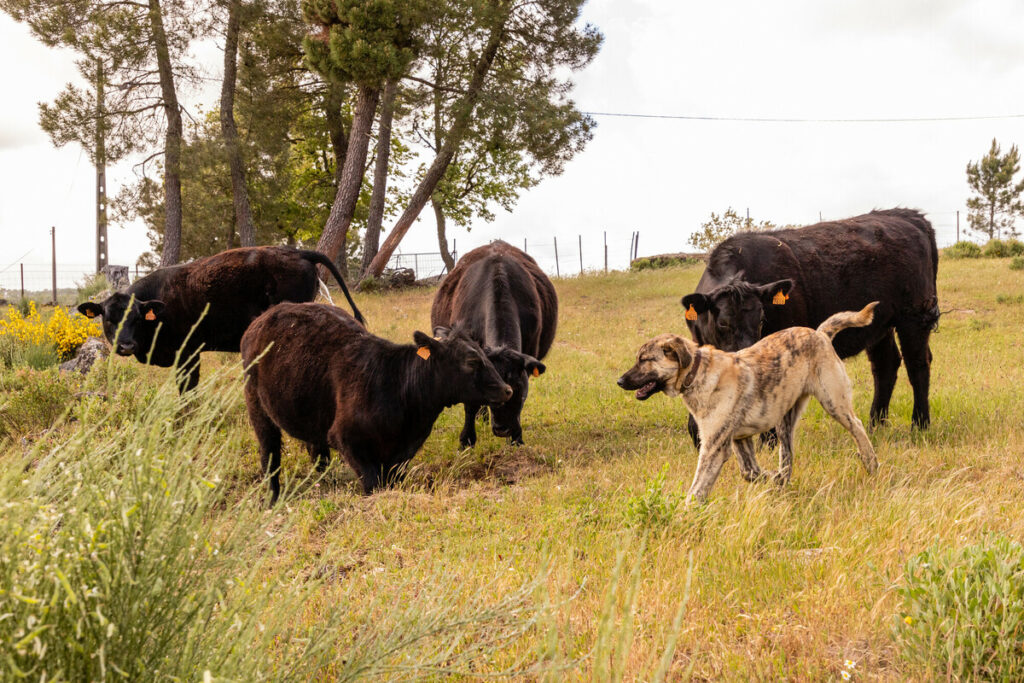
The partners involved in the new initiative will also work together with authorities in both Portugal and Spain to identify and prevent environmental crimes. In addition, they will establish partnerships with wildlife recovery centres and toxicological analysis laboratories, support and promote nature-based tourism, collaborate with key stakeholders to ensure human activities in the landscape are compatible with the presence of both predators, and carry out environmental education programmes for children and young people.
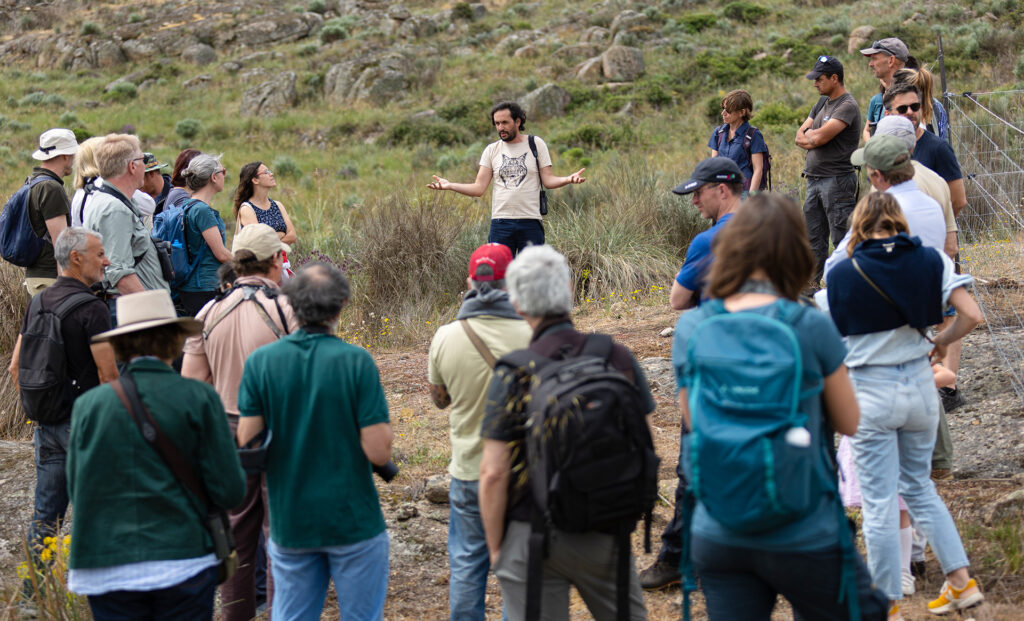
The Iberian lynx: spreading northward
Known for its pointy ears, long legs, and leopard-like spotted fur, the Iberian lynx is a species distinct from the more common Eurasian lynx, which is found from France to the Himalayas.
By the turn of this century, it was in danger of disappearing forever – largely as a result of poaching, traffic accidents, and habitat loss – with less than 100 individuals registered in Spain, and none in Portugal.
Since then, thanks to conservation efforts involving captive breeding, the Iberian lynx has made a gradual recovery, with over 1600 animals distributed across 15 core habitats in southern Spain and Portugal by 2022. Nevertheless, it is still classified as endangered on the IUCN’s Red List of Threatened Species. There are thought to be around 200 Iberian lynx in the Extremadura region, and it is hoped that some of these individuals will recolonise suitable habitat across the border in Portugal. The presence of Iberian lynx has recently been confirmed in the Castelo Branco area of Portugal, after an absence of more than three decades.
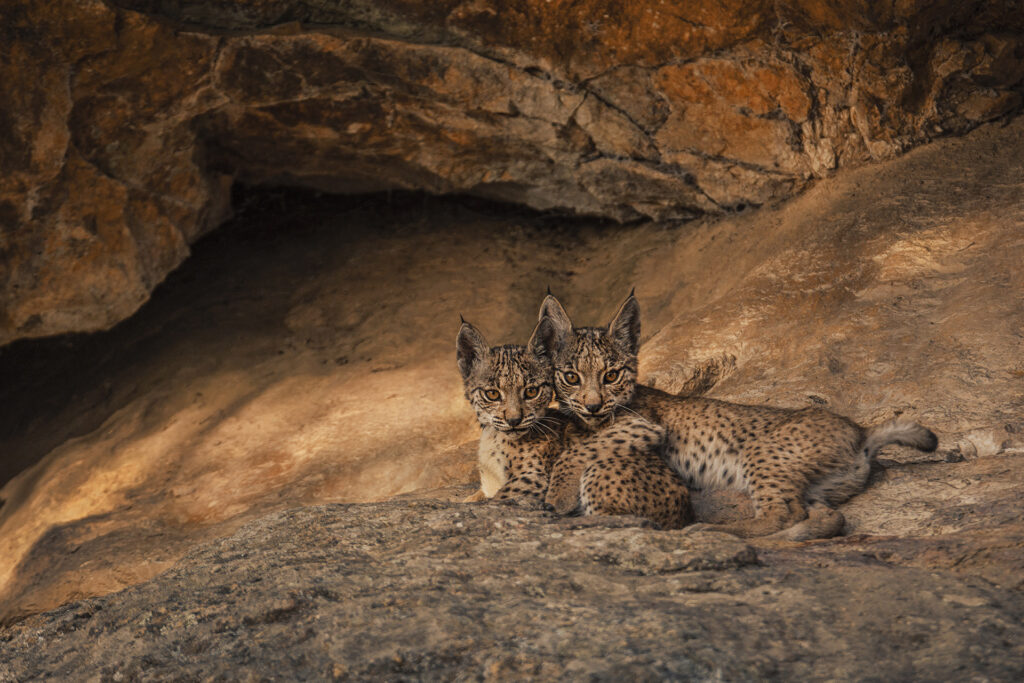
The Iberian wolf: spreading southward
The Iberian wolf is a subspecies of grey wolf endemic to Portugal and Spain. Once found across both countries, its range and abundance shrank considerably as a result of persecution, habitat loss and a decline in natural prey. When poisoning was outlawed in Spain in the 1970s, the species began to recover. The most recent census, in 2021, estimated the Spanish population at 2,000 to 2,500 wolves, with the vast majority located in the north-west of the country, where wolf hunting has been banned since 2021.
In Extremadura, where wolves used to exist in the Sierra de Gata and the Peña de Francia, wolves have long been locally extinct, although an individual was recently spotted in the region, offering hope that the species will make a comeback here. On the Portuguese side of the border, where the Rewilding Portugal have been focusing their efforts since 2019 to the west of the new focus area (in the Aveiro and Viseu regions), there are estimated to be around 30 to 50 Iberian wolves in a handful of scattered packs. The current Portuguese population of Iberian wolves, which is estimated at between 250 and 300 animals, is mostly based in the north of the country.
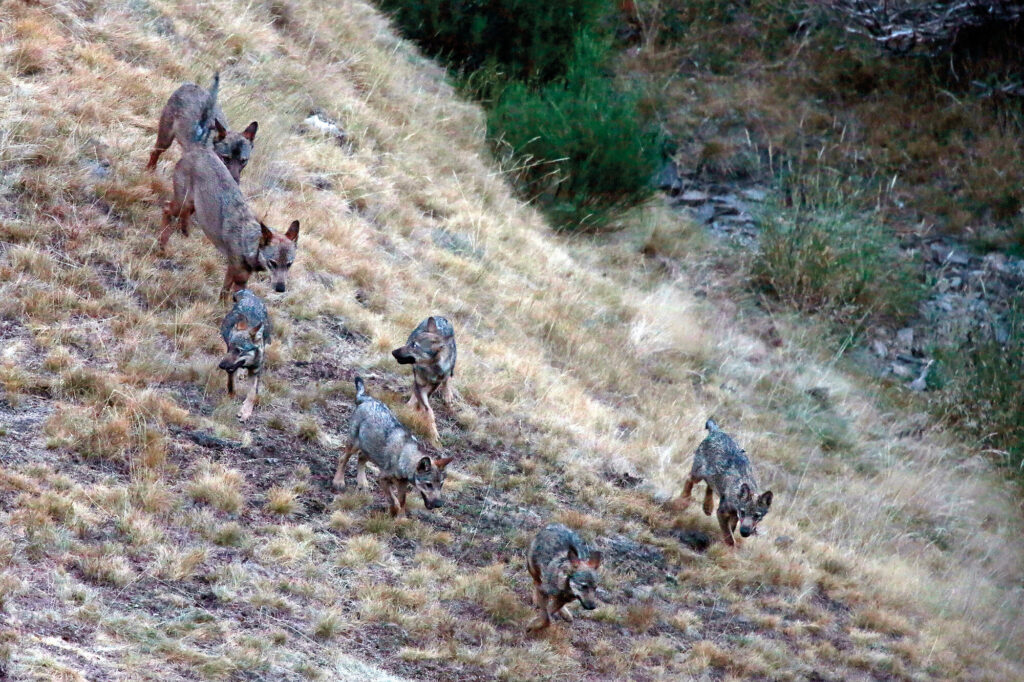
A multi-partner initiative
 In addition to Rewilding Portugal, the LIFE LUPI LYNX initiative involves four other Portuguese organisations – BIOPOLIS/CIBIO, Grupo Lobo, Plataforma de Ciência Aberta of the Municipality of Figueira de Castelo Rodrigo and the University of Aveiro, and two Spanish organisations – AMUS (Asociación de Accion por el Mundo Salvaje) and the Junta de Extremadura.
In addition to Rewilding Portugal, the LIFE LUPI LYNX initiative involves four other Portuguese organisations – BIOPOLIS/CIBIO, Grupo Lobo, Plataforma de Ciência Aberta of the Municipality of Figueira de Castelo Rodrigo and the University of Aveiro, and two Spanish organisations – AMUS (Asociación de Accion por el Mundo Salvaje) and the Junta de Extremadura.
The LIFE Programme is the European Union’s funding instrument for the environment and climate action. The budget for the LIFE LUPI LYNX initiative is 3.5 million euros, with the LIFE Programme contributing 75% and Rewilding Europe providing cofunding.
